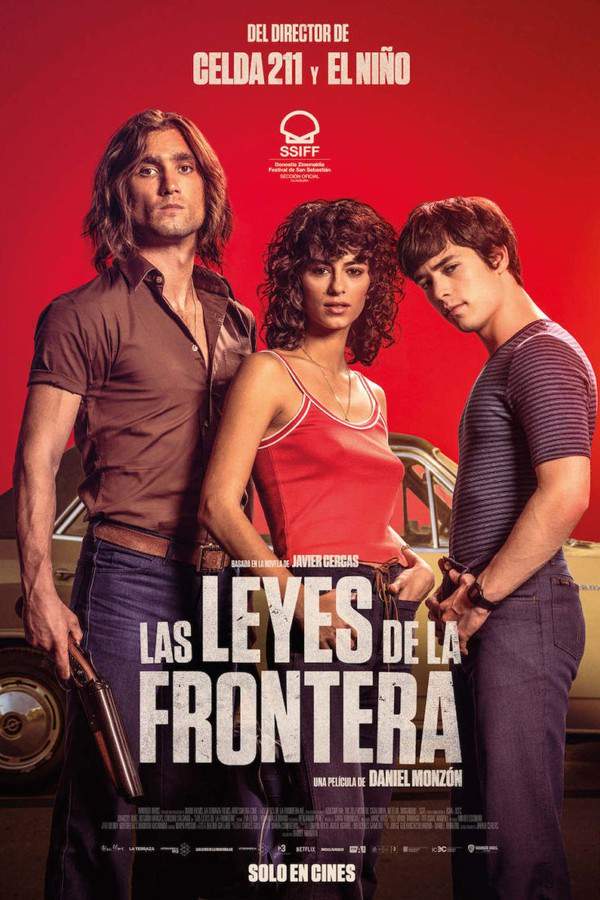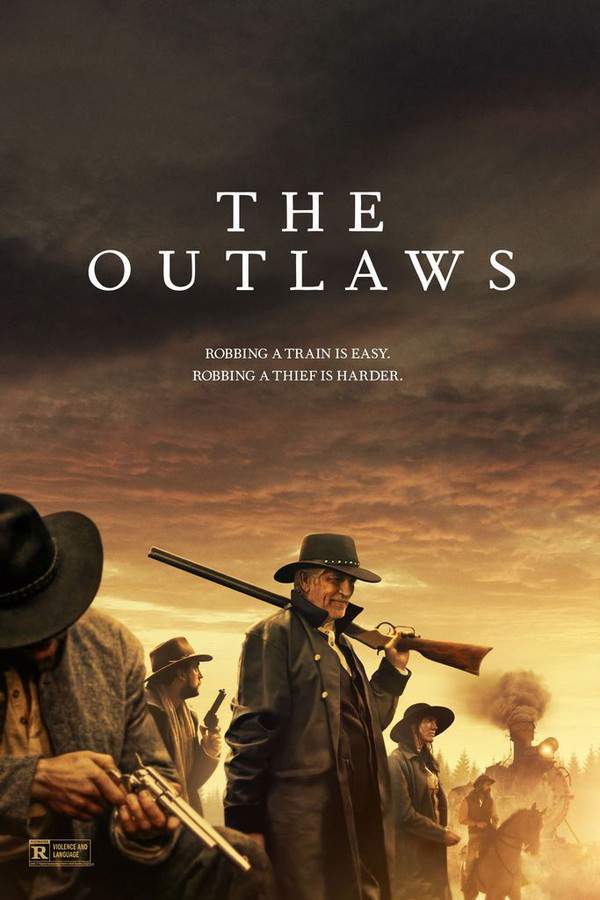
Outlaw
Year: 2007
Runtime: 103 min
Language: Russian
Director: Nick Love
Haunted by his experiences in the Iraq War, former Paratrooper Bryant returns to London and finds the city overrun by crime and a failing justice system. Disillusioned, he assembles a vigilante crew to deliver their own brutal form of retribution against those who operate outside the law. As they dispense their own brand of justice, a troubling question arises: who will hold them accountable for their actions?
Warning: spoilers below!
Haven’t seen Outlaw yet? This summary contains major spoilers. Bookmark the page, watch the movie, and come back for the full breakdown. If you're ready, scroll on and relive the story!
Outlaw (2007) – Full Plot Summary & Ending Explained
Read the complete plot breakdown of Outlaw (2007), including all key story events, major twists, and the ending explained in detail. Discover what really happened—and what it all means.
The film unfolds through a tapestry of interwoven stories set in and around London, where a growing sense that justice is uneven fuels growing frustration among ordinary people. Across these interlinked tales, individuals from different walks of life confront personal betrayals, violence, and the sense that the system lets the strong prevail over the vulnerable. The tone is measured and restrained, letting the danger and moral stakes accumulate as the characters’ paths collide.
First among the central figures is Gene Dekker, a well-meaning white‑collar worker who finds himself on the wrong end of a brutal incident after a car collision with a violent offender. His experience sharpens a core ache: a belief that even handed justice can feel far out of reach in a city that seems to reward aggression. Alongside him is Danny Bryant, a hardened paratrooper who has faced combat in multiple theatres and returns home to discover his personal life unraveling—his wife’s infidelity compounds his view that the country is now a battlefield of its own. Bryant’s worldview is disciplined by a soldier’s code, but it has been tempered by the disillusioning distance between the battlefield and civilian life.
In a separate thread, Cedric Munroe, a Crown Court prosecution barrister, finds himself targeted by death threats aimed at his pregnant wife. The pressure intensifies as the threats grow more ominous, and he becomes entangled in a tense confrontation with a powerful club owner and heroin dealer, Terry Manning, whose criminal empire casts a long shadow over the city’s underworld. The stakes widen with the arrival of Sandy Mardell, a Cambridge University student and the son of Bryant’s former commanding officer. Recently released from hospital after a brutal attack that left lasting scars, Mardell joins the fray with a wary sense that the violence around him is not simply a rumor but a tangible threat to his future.
A pivotal bridge between these threads is Simon Hillier, a jingoistic hotel security guard and former football hooligan whose loyalty and ferocity tie the main players together. Hillier’s past links to all three men—Dekker’s school days, Munroe’s prior defense in court, and Bryant’s stay at the hotel—provide the connective tissue that brings them into a shared orbit. Together, they form a vigilante group, convinced that they can identify and neutralize threats to society by taking the law into their own hands. Their efforts are supported by Walter Lewis, a police officer who remains one of the few uncorrupted figures in a system that has otherwise become compromised. Demoted to desk duty, Lewis provides the group with crucial information about targets tied to Manning, offering a glimpse of a cleaner conscience amid rising corruption.
As the Outlaws begin to operate, their target set expands to those linked to Manning’s criminal network. They become a cause célèbre, drawing media attention even as their actions threaten to blur the line between justice and vigilantism. They also rely on Bryant’s military methods, including firearms he had taken from active duty, to mount a decisive, if controversial, effort against those they judge to be threats to public safety.
Tensions escalate when the group’s indiscretions push them into revealing their identities to one of Manning’s men, Ian Furlong. The failure to eliminate Furlong leads to a brutal retaliation: Furlong kills Walter Lewis, a blow that deeply unsettles the group and ratchets up the danger. Bryant, cast as the leader, becomes the central target of blame and is ultimately framed for the murder. The Outlaws begin to fracture under the weight of betrayal, suspicion, and the consequences of their own high-risk choices. In a brutal moment of reckoning, Bryant executes a harsh act of punishment by hanging Hillier for being a liability, a stark demonstration of how quickly loyalty can invert into ruthless authority.
With the vigilantes splintered, the pursuit of Manning intensifies as they return to their day-to-day lives, each wrestling with the consequences of their choices. Manning is released from custody amid the lack of a strong prosecution, a development that leaves the door open for renewed confrontation. Dekker receives word from his colleague Frank Lordish that Manning’s whereabouts may be traced to the countryside, and Dekker—unable to leave Manning free to operate—abandons a personal commitment by fleeing his wedding to pursue the case. He and Munroe collaborate with Mardell and Bryant to formulate a plan that acknowledges their own vulnerabilities: they recognize that they may not survive an assault on Manning’s home, yet they proceed with resolve.
The trio infiltrates Manning’s residence, only to discover that they have walked into an ambush. Armored police soon arrive outside the property, led by the corrupt Sgt. Grieves, a member of the Flying Squad who is in league with Manning. A fierce gunfight erupts as the Outlaws and the police duel in the surrounding area, forcing their retreat into the woods for a final confrontation. Dekker sustains a shoulder wound, Bryant is killed in the line of advance against an armed response unit, and Munroe surrenders with the heartbreak of witnessing corruption up close as he is murdered by the police.
In a tense moment of survival, Dekker is revealed to have been playing dead, and he manages a narrow escape through the forest under a barrage of gunfire. The immediate threats subside only to reveal a chilling, unresolved closure: Manning remains at large, his grip on crime unchallenged by the system that failed to prosecute him effectively.
The final beat of the film settles on an ominous exchange in a car park, where Manning is confronted by Dekker. In a quiet, almost clinical moment of defiance, Manning tests Dekker with the taunt, “You haven’t got the bollocks, son.” Dekker’s response is not verbal but decisive—in a single, focused act, he pulls the trigger.
The closing sequence casts a long shadow over the theme of justice and retribution. The film lingers on the consequences of taking the law into one’s own hands, the fragility of institutions meant to protect society, and the way personal trauma can push individuals toward extreme measures. It leaves audiences with a stark meditation on moral ambiguity, the high price of vigilante justice, and the enduring question of whether righteous anger can ever be fully redeemed in a city where crime and corruption often walk hand in hand with power.
Last Updated: November 22, 2025 at 15:58
Unlock the Full Story of Outlaw
Don't stop at just watching — explore Outlaw in full detail. From the complete plot summary and scene-by-scene timeline to character breakdowns, thematic analysis, and a deep dive into the ending — every page helps you truly understand what Outlaw is all about. Plus, discover what's next after the movie.
Outlaw Timeline
Track the full timeline of Outlaw with every major event arranged chronologically. Perfect for decoding non-linear storytelling, flashbacks, or parallel narratives with a clear scene-by-scene breakdown.

Similar Movies to Outlaw
Discover movies like Outlaw that share similar genres, themes, and storytelling elements. Whether you’re drawn to the atmosphere, character arcs, or plot structure, these curated recommendations will help you explore more films you’ll love.
Explore More About Movie Outlaw
Outlaw (2007) Scene-by-Scene Movie Timeline
Outlaw (2007) Movie Characters, Themes & Settings
Outlaw (2007) Spoiler-Free Summary & Key Flow
Movies Like Outlaw – Similar Titles You’ll Enjoy
Outlawed (2018) Ending Explained & Film Insights
Outlaw Force (1988) Detailed Story Recap
Outlaws (2019) Complete Plot Breakdown
An Outlaw (1964) Plot Summary & Ending Explained
Outlaws (1985) Full Summary & Key Details
Outlaw Riders (1971) Movie Recap & Themes
Outlaw Brothers (1990) Story Summary & Characters
Outlaw Blues (1977) Story Summary & Characters
The Outlaws (2024) Complete Plot Breakdown
Outlaw: Gangster VIP (1968) Complete Plot Breakdown
Out for a Kill (2003) Ending Explained & Film Insights
Outlaw Love (1979) Full Movie Breakdown
Outlaw: Kill! (1969) Complete Plot Breakdown
Outlaws (2021) Complete Plot Breakdown
The Out-Laws (2023) Full Movie Breakdown

















